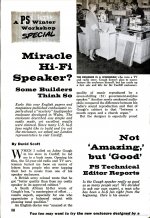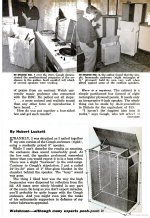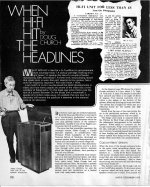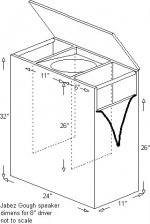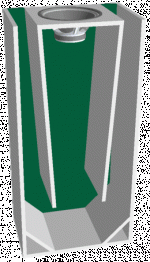Hello,
i found this Gough´s speaker enclosure and i love the concept of refletion of the sound.
but im wondering if it will sound good and if its worth to build one
its a transmission line?
because has a paralell tube but it has no stuffing
somebody heard one of this cabinets?
here is a website dedicated to this cabinet:
History - GOUGH SPEAKERS ARCHIVE
and here two videos video of one :
All hail Jabez Gough and the 1957 vacuum-tube hi-fi - YouTube
Old-school hi-fi with a Gough speaker - YouTube
i found this Gough´s speaker enclosure and i love the concept of refletion of the sound.
but im wondering if it will sound good and if its worth to build one
its a transmission line?
because has a paralell tube but it has no stuffing
somebody heard one of this cabinets?
here is a website dedicated to this cabinet:
History - GOUGH SPEAKERS ARCHIVE
and here two videos video of one :
All hail Jabez Gough and the 1957 vacuum-tube hi-fi - YouTube
Old-school hi-fi with a Gough speaker - YouTube
Attachments
-
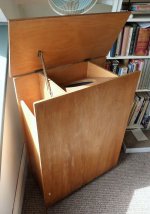 Vintage-controversial-Jabez-Gough-reflecting-loudspeaker-excellent.jpg311.9 KB · Views: 284
Vintage-controversial-Jabez-Gough-reflecting-loudspeaker-excellent.jpg311.9 KB · Views: 284 -
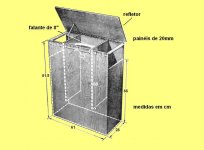 image036.jpg42 KB · Views: 192
image036.jpg42 KB · Views: 192 -
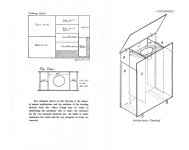 PlanRear.jpg144.8 KB · Views: 181
PlanRear.jpg144.8 KB · Views: 181 -
 image028.jpg68.7 KB · Views: 161
image028.jpg68.7 KB · Views: 161 -
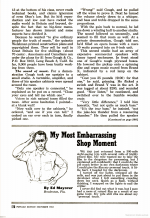 content.png308.8 KB · Views: 141
content.png308.8 KB · Views: 141 -
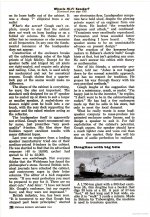 content.jpg555 KB · Views: 142
content.jpg555 KB · Views: 142 -
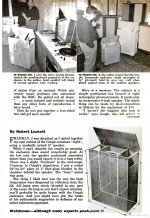 content (2).jpg639.9 KB · Views: 271
content (2).jpg639.9 KB · Views: 271 -
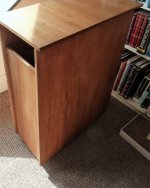 Vintage-controversial-Jabez-Gough-reflecting-loudspeaker-excellent-_57 (6).jpg434.2 KB · Views: 274
Vintage-controversial-Jabez-Gough-reflecting-loudspeaker-excellent-_57 (6).jpg434.2 KB · Views: 274 -
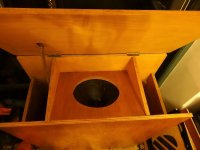 DSC05039.jpg56.9 KB · Views: 282
DSC05039.jpg56.9 KB · Views: 282 -
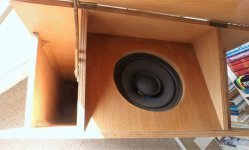 Vintage-controversial-Jabez-Gough-reflecting-loudspeaker-excellent-_57 (2).jpg188.4 KB · Views: 319
Vintage-controversial-Jabez-Gough-reflecting-loudspeaker-excellent-_57 (2).jpg188.4 KB · Views: 319
Last edited:
It could probably be seen as resembling any number of enclosures. Certainly there is the potential for many resonances. Perhaps the diffuse sound helps to incorporate these into something useful and good to listen to.
i don't have an OS for hornresp, but you can see the pipe's first section is ~775 sq.cm. 2nd section ~580 sq.cm. The dual exits are close to the driver and the lid effectively adds a bit of length to the path. It's an attractive looking cabinet being reminiscent of phonograph from its day.
With a 66cm x 2 path length, the 1/4wave frequency is 64Hz, so you could call this a TL. But closer to a straight wall double expansion BLH.
im in doubt looking it as a transmission line, because the tube sectional area is much bigger than the cone area....its not common in TL as i have seen...it make sense?
I made some research about this cabinet and goughs said that he didnt make any calculations to build this, and he dont know much about acoustic theory. and deveop this through trial and error
*he said it too in the article attached
in the article he said that the design could be scaled up or down to suit bigger os smaller drivers
as i know changing the lenght will change the tuning...and attached is a photo of goughs with very little cabinets... so that cabinets are tuned in more high frequencies...wich i think is not good😕
but could we redesign this using the same concept but now calculating with acoustic parameters and make this concept more acurate technically?
because at the time the inventor didnt have technical knowledge to improve his concept
and maybe this concept has more potencial than the knowledge of the inventor of the time could bring to life
i love the concept but i dont have yet pratical experience enough to improve this... i´m reading things and triyng to understand more about the theory have some ideas to apply.
i think would be good if we try together to design a modern version of this...something like a Goughs speaker 2.0
so any help (or mentor) in this challenge would be great
I made some research about this cabinet and goughs said that he didnt make any calculations to build this, and he dont know much about acoustic theory. and deveop this through trial and error
*he said it too in the article attached
in the article he said that the design could be scaled up or down to suit bigger os smaller drivers
as i know changing the lenght will change the tuning...and attached is a photo of goughs with very little cabinets... so that cabinets are tuned in more high frequencies...wich i think is not good😕
but could we redesign this using the same concept but now calculating with acoustic parameters and make this concept more acurate technically?
because at the time the inventor didnt have technical knowledge to improve his concept
and maybe this concept has more potencial than the knowledge of the inventor of the time could bring to life
i love the concept but i dont have yet pratical experience enough to improve this... i´m reading things and triyng to understand more about the theory have some ideas to apply.
i think would be good if we try together to design a modern version of this...something like a Goughs speaker 2.0
so any help (or mentor) in this challenge would be great
Attachments
It’s a resonant aero-acoustic device that’s for sure. Calling it a TL vs a back loaded horn etc doesn’t change fact that it will have a resonant frequency around 60Hz based upon the path length. When I model this is Akabak it’s all a “waveguide” element, the building block for TLs or horns or waveguides. But I would say it’s closer to a BLH.
i don't have an OS for hornresp, but you can see the pipe's first section is ~775 sq.cm. 2nd section ~580 sq.cm. The dual exits are close to the driver and the lid effectively adds a bit of length to the path. It's an attractive looking cabinet being reminiscent of phonograph from its day.
do you think would be a good idea to put the karlson slot in each side like the draw in the image attached?
would it improve the reasonance frequency or frequency range?
whats the advantages and disvantages of it?
Attachments
thank you xrk971
as i dont know in depth all the types i was trying to discover what kind of enclosure would fits better so i can concentrate in know more about it to try do understand better this cabinet
and you give me a light saying its a BLH because some things that i read before made sense in the goughs speaker now...
i was trying to see this as TL because of this similar model of a TL...
AQA Bass Box
as i dont know in depth all the types i was trying to discover what kind of enclosure would fits better so i can concentrate in know more about it to try do understand better this cabinet
and you give me a light saying its a BLH because some things that i read before made sense in the goughs speaker now...
i was trying to see this as TL because of this similar model of a TL...
AQA Bass Box
Attachments
- don't know about adding Karlson/Fulmer slots as have seen that introduce a notch when modifying a Roger Sanders 10ft path T-line.
Towards the bottom of Roger Russell's page on omni-directional speakers, there's a project by David Weems which may be of interest
Omnidirectional speakers
And that article starts on page 72 of this July 1961 issue of Popular Electronics
https://worldradiohistory.com/Archive-Poptronics/60s/61/Pop-1961-07.pdf

Towards the bottom of Roger Russell's page on omni-directional speakers, there's a project by David Weems which may be of interest
Omnidirectional speakers
And that article starts on page 72 of this July 1961 issue of Popular Electronics
https://worldradiohistory.com/Archive-Poptronics/60s/61/Pop-1961-07.pdf

Last edited:
It also reminded me of my Flat BIB or FIB speaker which is a BLH with two exits up.
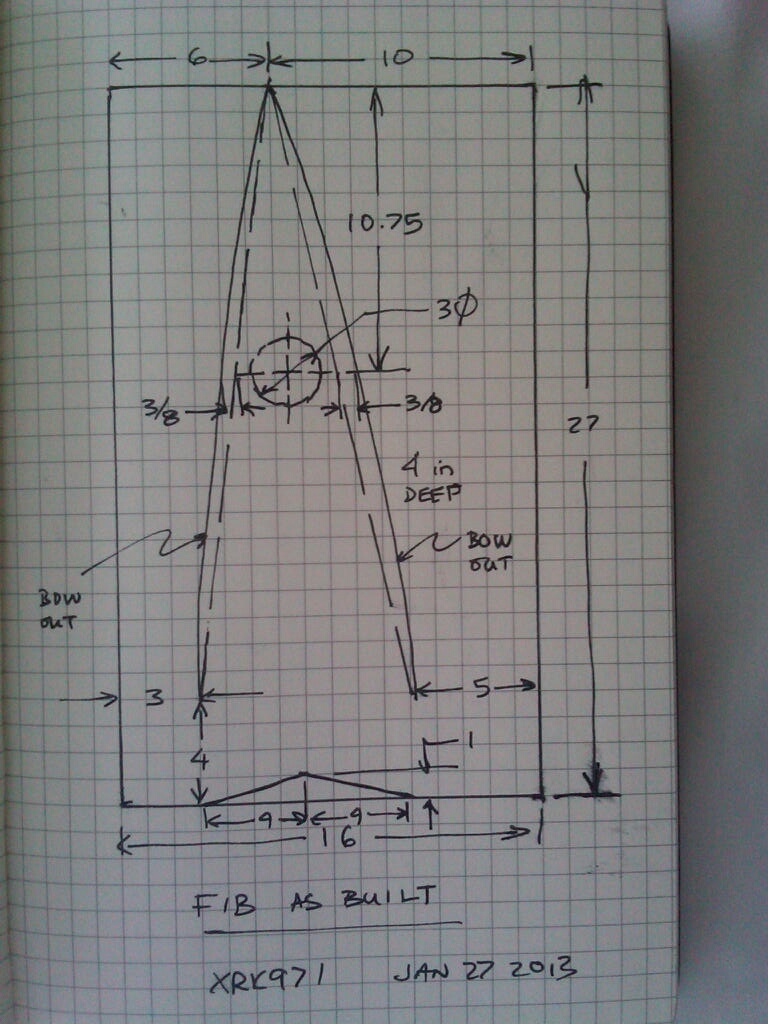
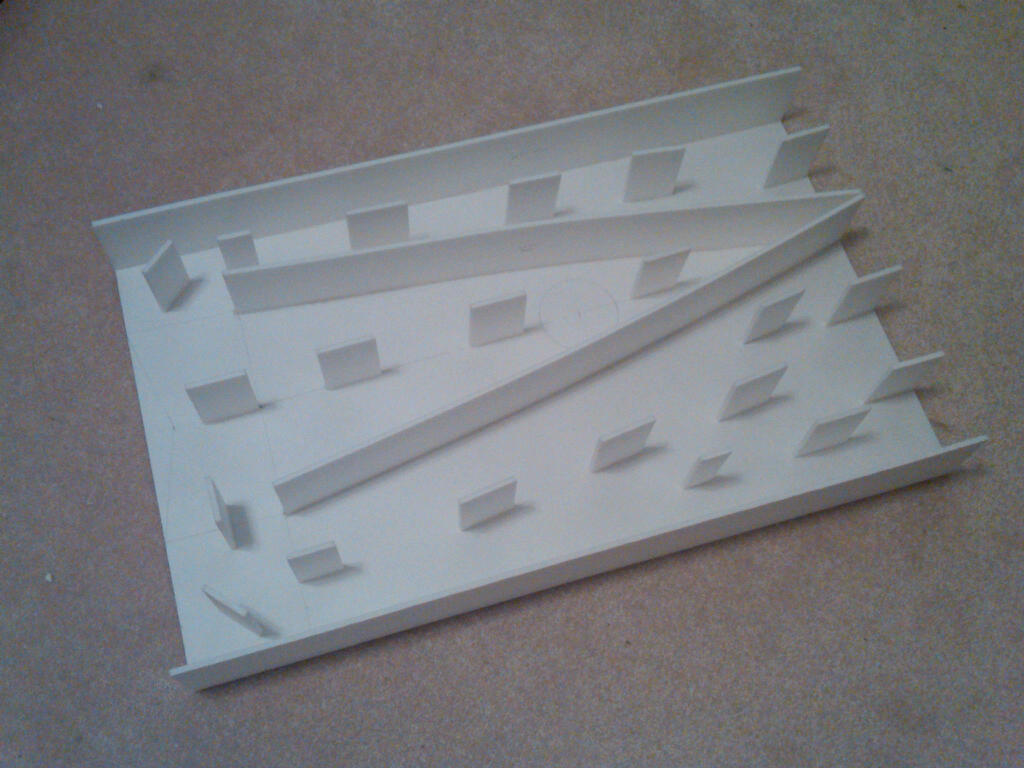
Here is the bottom piece:
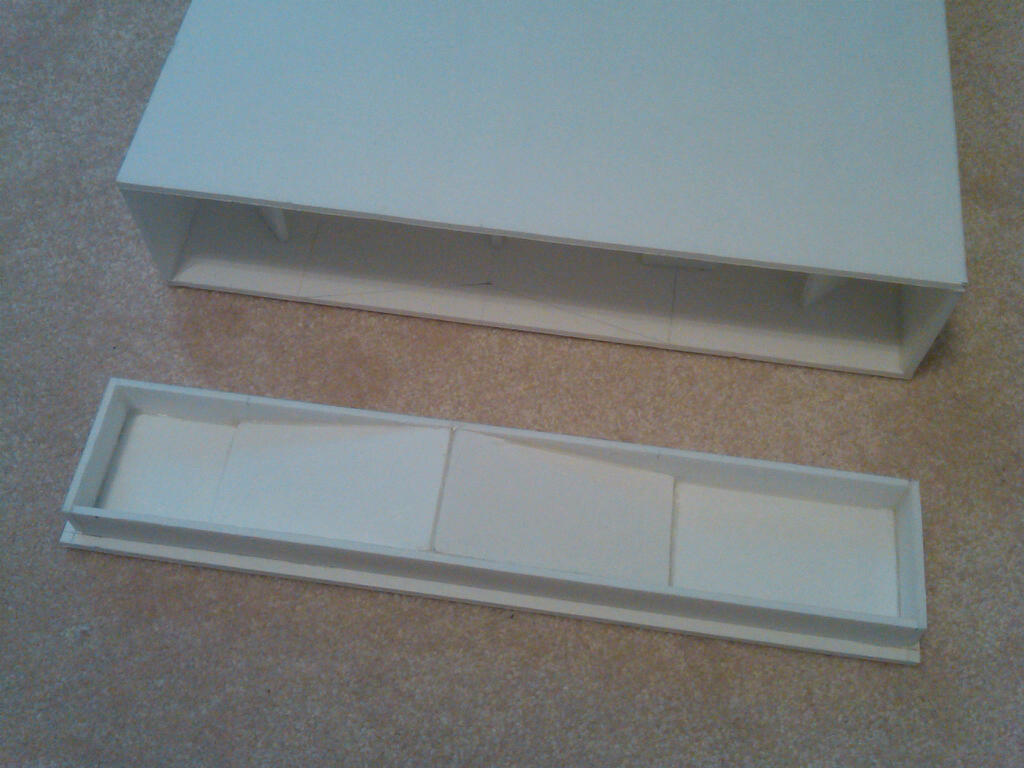
Assembled from the front:
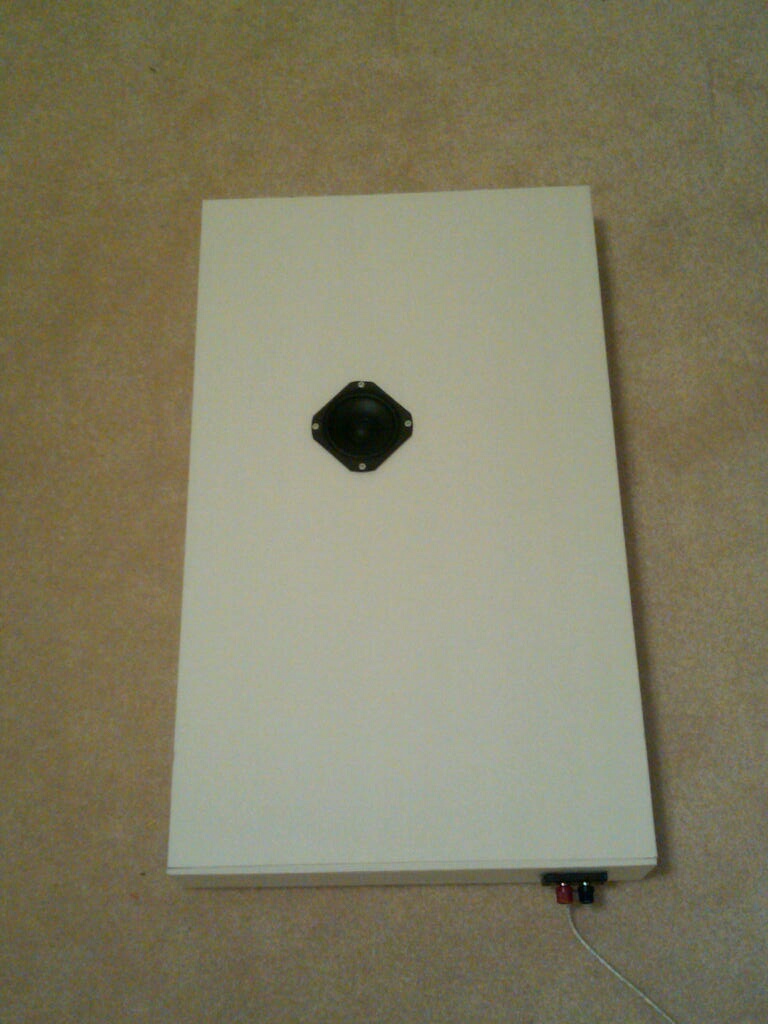
The Karlson slots will reduce the effective pathlength and bass extension will be lower. For the frequencies involved here I don't think the issue is needing a K aperture on the bass BLH output. The K aperture has more to do with acting as an acoustic lens from 300Hz to 1kHz range.
Here is the bottom piece:
Assembled from the front:
The Karlson slots will reduce the effective pathlength and bass extension will be lower. For the frequencies involved here I don't think the issue is needing a K aperture on the bass BLH output. The K aperture has more to do with acting as an acoustic lens from 300Hz to 1kHz range.
Last edited:
- Home
- Loudspeakers
- Full Range
- Is the Gough´s Speaker a transmission line?
